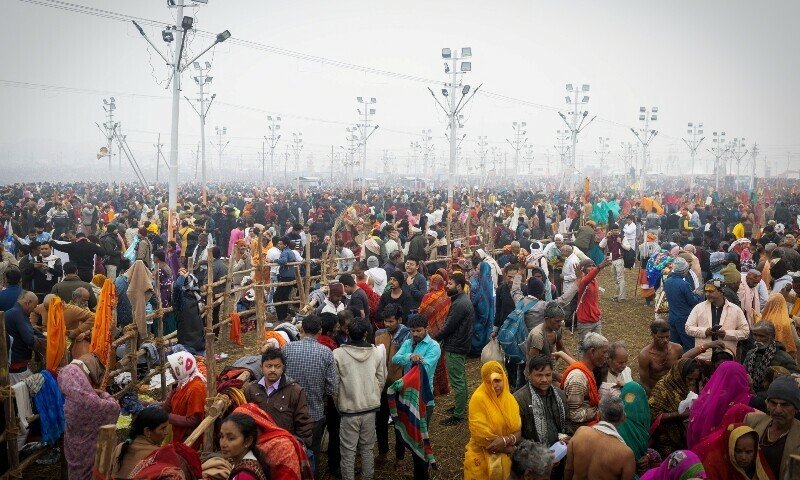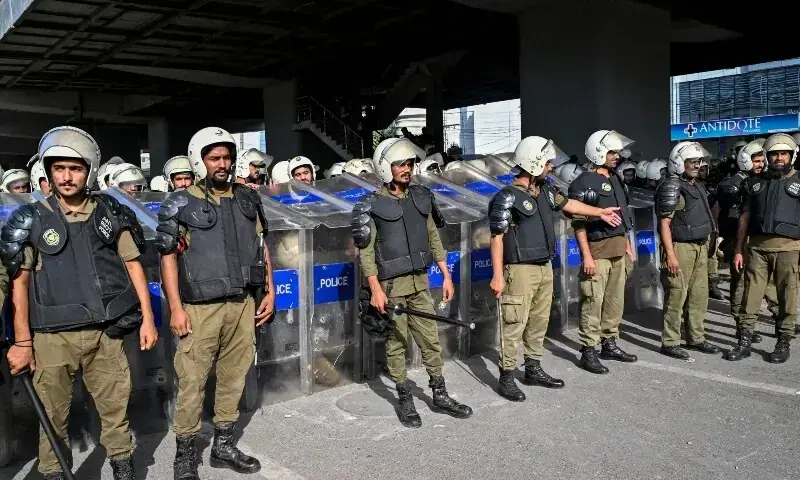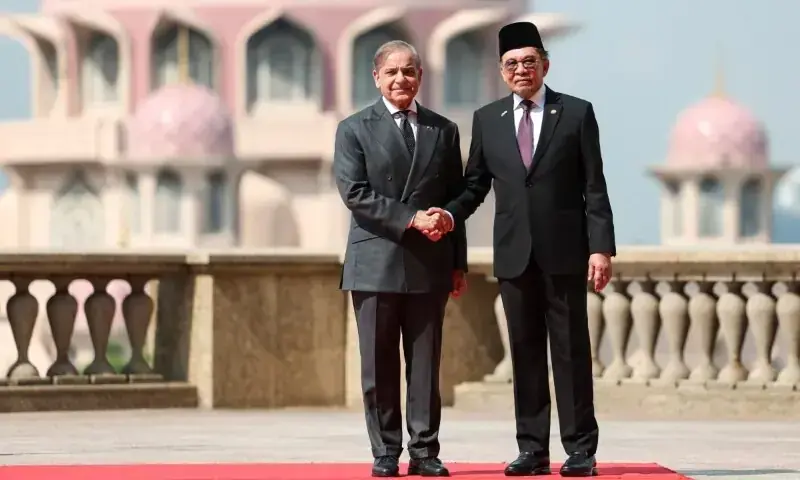Large crowds of Hindu pilgrims in India bathed in sacred waters on Monday as the Kumbh Mela festival opened, with organizers expecting 400 million people to attend, the largest gathering of humanity.
The ancient Kumbh Mela, a display of religious piety and ritual bathing, and a logistical challenge of staggering proportions, takes place where the Ganges, Yamuna and mythical Saraswati rivers meet.
In the cool pre-dawn gloom, the pilgrims hurried to begin bathing in the waters.
“I feel great joy,” said Surmila Devi, 45.
“For me, it’s like bathing in nectar.”
Businesswoman Reena Rai’s voice trembled with emotion as she spoke of the “religious reasons” that led her to join the tent camps, clustered along the banks of the river in the northern Indian city of Prayagraj. in the state of Uttar Pradesh.
“As a Hindu, this is an unmissable occasion,” said the 38-year-old, who traveled about 1,000 kilometers (620 miles) from the state of Madhya Pradesh to take part in the festival, which runs from Monday to February 26. .
Saffron-clad monks and naked ascetics covered in ash wandered through the crowd offering blessings to devotees, many of whom had walked for weeks to reach the site.
The massive gathering is also an occasion for India’s Hindu nationalist government to burnish its credentials.
Prime Minister Narendra Modi called it a “divine occasion,” bringing together “countless people in a sacred confluence of faith, devotion and culture.”
Yogi Adityanath, a Hindu monk and chief minister of Uttar Pradesh, welcomed devotees to “experience unity in diversity” at the “world’s largest spiritual and cultural gathering.”
‘Scale of preparations’
Organizers say the scale of the Kumbh Mela is that of a temporary country, and numbers are expected to total around the combined populations of the United States and Canada.
“Some 350 to 400 million devotees will visit the mela, so you can imagine the magnitude of the preparations,” said festival spokesperson Vivek Chaturvedi.
The Hindu monks carried enormous flags of their respective sects, while behind them circulated tractors converted into carts for life-size idols of Hindu gods accompanied by elephants.
The pilgrims rejoiced with the rhythm of the drums and the sound of the horns.
The festival has its roots in Hindu mythology, a battle between deities and demons for control of a jar containing the nectar of immortality.
The organizing authorities call it the grand or “Maha” Kumbh Mela.
‘One with God’
The riverbank in Prayagraj has become a vast sea of tents: some luxurious, others simple canvas.
It took Jaishree Ben Shahtilal three days to reach the holy site, traveling with his neighbors from the state of Gujarat in a convoy of 11 buses over three days.
“I have great faith in God,” he said. “I have waited so long to bathe in the sacred river.”
Around 150,000 toilets have been built and a network of community kitchens can feed up to 50,000 people at a time.
Another 68,000 LED light poles have been installed for a gathering so large their bright lights can be seen from space.
The last celebration there, the “ardh” or half Kumbh Mela in 2019, attracted 240 million pilgrims, according to the government.
That compares with about 1.8 million Muslims who participate in the annual Hajj pilgrimage to Mecca in Saudi Arabia.
Indian police said they were “conducting incessant patrolling day and night to ensure maximum security” during the event.
Authorities and police have also created a network of “lost and found” centers and an accompanying phone application to help pilgrims lost in the huge crowd “reunite with their families.”
India is the most populous nation in the world, with 1.4 billion people, and is therefore accustomed to large crowds.
Temperatures hovered around 15 degrees Celsius (59 Fahrenheit) overnight, but pilgrims said their faith kept their bathrooms warm.
“Once you are in the water, you don’t even feel cold,” said devotee Chandrakant Nagve Patel, 56.
“I felt like I was one with God.”
Hindus believe that bathing there during Kumbh helps cleanse sins and brings salvation.
“It’s a once-in-a-lifetime opportunity,” said Savita Venkat, a teacher in the southern city of Bengaluru.
Government employee Bhawani Baneree, who had come from the western state of Maharashtra, said the “vibrant atmosphere” had made his long journey worthwhile. “Everything is so beautiful,” he said.









